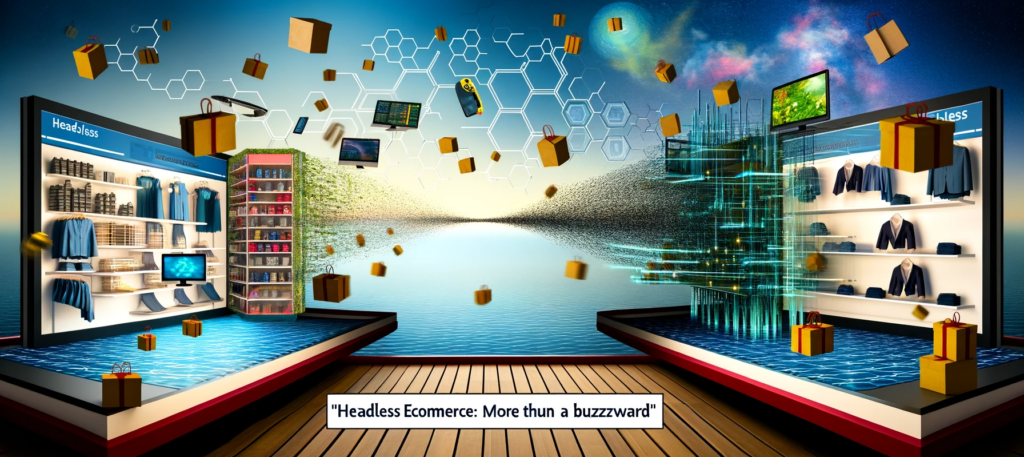"Change is the law of life. And those who look only to the past or present are certain to miss the future.."
~ John F. Kennedy
Adaptation might prevent you from sinking.
But that can’t be the goal. Right? Right???
Only the audacious will survive—and only transformation will lead to market dominance.
It’s not about being an early adopter. Rather, it’s about the intent to scale and potentially lead trends.
In 2024, Shopify is not just evolving; it’s setting the stage for a revolution in ecommerce. These trends go beyond incremental improvements; they are radical shifts that promise to reshape the way we think about online commerce.
It is almost impossible to guess, what the next big thing in Shopify is going to be, but we can all make smart and educated guesses. Here is a list of top Shopify trends that will define ecommerce in 2024.
Voice Search and Augmented Reality (AR)
Adopting voice search and AR technologies in ecommerce will significantly enhance the shopping experience, offering users a more intuitive and interactive way to shop.
On the other hand, augmented reality will enable customers to visualize products in their own environment or see how they look with a particular item, thus reducing uncertainty and increasing the likelihood of a purchase.
Mobile Commerce Optimization
Optimizing your Shopify store for mobile devices is imperative. This includes responsive design, fast loading times, and streamlined navigation to ensure a seamless and enjoyable shopping experience on smartphones and tablets.
Mobile optimization also involves optimizing checkout processes to reduce cart abandonment rates.
Sustainability
More shoppers are seeking out eco-friendly products and transparent business practices.
Incorporating sustainability into your business model can include using sustainable materials, implementing eco-friendly shipping and packaging solutions, and actively communicating your sustainability efforts to customers.
This helps attract a market segment that prioritizes environmental responsibility and builds a positive brand image and loyalty among consumers who value sustainability.
Social Commerce
Social Commerce integrates ecommerce with social media, offering a convenient platform for users to discover and purchase products without leaving their favorite social apps.
This trend underscores the importance of having a robust social media presence and utilizing features like shoppable posts, in-app checkout, and live shopping events to create a seamless and engaging shopping experience on social platforms.
Advanced Features for Enterprise-level Businesses
Shopify Plus is designed to meet the needs of enterprise-level businesses by offering advanced features and dedicated support.
These include customizable checkouts, increased API limits, and access to exclusive apps and integrations to handle high-volume transactions and complex operations.
With Shopify Plus, large businesses can manage their extensive product inventories, cater to a global customer base, and integrate their ecommerce platform with other enterprise systems.
Personalized Shopping Experience Using AI
Utilizing artificial intelligence to analyze customer data and behavior can revolutionize the shopping experience by offering personalized product recommendations and tailored marketing messages.
This level of personalization enhances user engagement by making shoppers feel understood and valued, leading to improved loyalty and higher conversion rates.
AI can track user preferences, browsing history, and purchase patterns to predict and suggest products customers are likelier to buy.
Subscription-based Models and International ecommerce Growth
Subscription-based models provide customers with convenience and value, offering them a hassle-free way to receive their favorite products regularly. This model fosters customer retention and predictable revenue for businesses.
Simultaneously, the growth of international ecommerce opens doors for businesses to reach a global audience, increasing their market potential and diversifying their customer base.
By embracing these trends, companies can cater to the demand for flexible shopping options and tap into emerging markets, driving growth and expanding their global footprint.
Cybersecurity
Today, when data breaches and cyber threats are prevalent, robust cybersecurity measures are crucial to safeguard consumer data and maintain trust in ecommerce platforms.
Educating consumers about safe online shopping practices and being transparent about data protection policies can also enhance trust and loyalty.
360 Product Videos
360 product videos offer a dynamic and interactive way for customers to view products from every angle, simulating the tactile experience of shopping in a physical store.
This visual tool can significantly enhance product understanding, reduce uncertainty, and increase the likelihood of purchase.
Increased Focus on Social Commerce and TikTok Discovery
The rise of social commerce signifies a pivotal shift in how consumers discover and purchase products, with platforms like TikTok emerging as powerful tools in this landscape.
The platform’s ability to influence purchase decisions through engaging content and direct product discovery features has made it a vital channel for brands looking to tap into a younger, dynamic audience.
The trend points towards a future where shopping is seamlessly integrated with social experiences, enabling brands to leverage viral content and influencer partnerships to drive sales and brand loyalty on social media.
Live Shopping Experiences
Live shopping is transforming the ecommerce landscape by bringing the dynamism and immediacy of in-store shopping to the digital realm.
Originating in Asian markets, this trend combines entertainment with instant purchasing, allowing viewers to interact with hosts, ask questions, and make purchases in real time.
For Shopify store owners, integrating live shopping can enhance customer engagement, provide unique content, and tap into the growing preference for interactive and immersive shopping experiences.
Headless Commerce
Headless commerce represents a paradigm shift in e-commerce. In this model, the front end (what users see) is decoupled from the back end (where data is processed), allowing for greater flexibility and innovation in customer experiences.
This architecture enables businesses to tailor their online presence across various touch points—websites, mobile apps, or IoT devices—without being constrained by the limitations of traditional ecommerce platforms.
For brands, this means the ability to rapidly deploy changes, personalize user experiences, and integrate with emerging technologies to stay ahead in the competitive digital marketplace.
Right Now, is the Right Time
It’s clear that the future of ecommerce is not just about adapting but about leading with innovation.
These trends are not mere predictions; they are signposts directing us toward a future where ecommerce transcends traditional boundaries and creates new opportunities for growth, engagement, and success.
The possibilities are endless and there’re two things you can do—adapt and lead or wait until it’s late.
FAQs
How Can Shopify’s Green Initiatives Impact My Ecommerce Strategy?
What Role Does AI Play in Shopify’s 2024 Trends?
AI is instrumental in personalizing the shopping experience on Shopify, offering tailored product recommendations, and optimizing inventory management. AI-driven insights can help store owners make data-informed decisions to enhance their business strategy.
How Do You Leverage Augmented Reality in a Shopify Store?
Augmented reality (AR) can be leveraged in your Shopify store to offer customers a virtual try-on experience, visualize products in their space, or provide interactive and engaging demonstrations.
Why is Social Commerce a Trend to Watch on Shopify?
It capitalizes on social platforms’ vast user base, facilitating targeted marketing and peer recommendations for Shopify store owners. Adopting social commerce can lead to increased visibility, customer engagement, and sales.
Adopting Shopify’s green initiatives can significantly bolster your ecommerce strategy by appealing to environmentally conscious consumers. It demonstrates a commitment to sustainability, which can differentiate your brand in a crowded market.
Moreover, it can lead to long-term cost savings through more efficient operations and a potential increase in customer loyalty.



